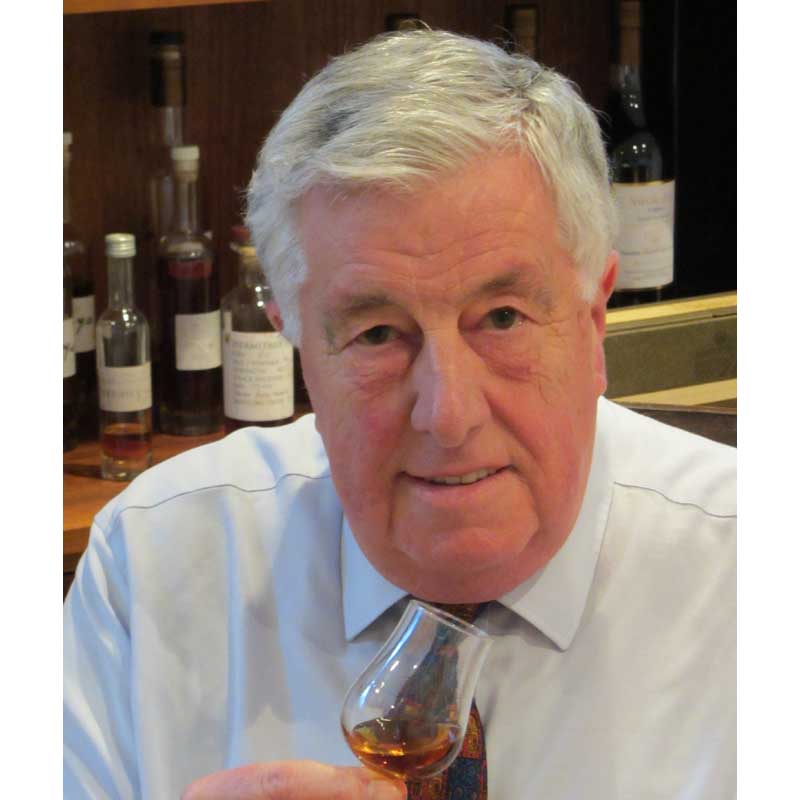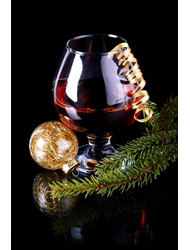Category: Brandy Education

David on Technical Topics – ‘Terroir’, The Land
The French use the term ‘terroir’ uniquely to describe geological and climatic conditions as a basis for their system of ‘Appellations Cognac Controlee’. This is the geographic, quality control that defines the cognac crus and is vital for the Cognaçaise to differentiate their products. All the brandies entitled to the ‘cognac appellation’ are made from the same grape varieties, harvested in the same way, at the same time of the year, fermented in similar vats, distilled in the same type of still and aged in regulation oak barrels. There are six crus of cognac and in the centre is the… Read more

David on Technical Topics – Pineau
Many of us travel to France in the summer holidays and diligently search out local products which are unique to the area we are visiting and Pineau des Charentes, with its rich and often sweet properties, is perhaps the one which interests us most. We ask “what is it?” and the answer “Pineau” does nothing to reassure us. We ask, “is it a wine or a brandy?”, ”is it like a sherry or a port?” and the answer still comes back, “Pineau”! Pineau is unique as indeed sherry or port are in their respective countries. It is a combination of… Read more

David on Technical Topics – The Traditional Christmas Spirit
Brandy has been the traditional spirit of Christmas since the sixteenth century and was immortalised by Dickens in Mrs Cratchit’s Christmas pudding, “blazing in half of half a quarter of ignited brandy”. But it is said that cognac was recognised in 1540 after a Chevalier du Maron took two casks of newly reduced or distilled wine to a local monastery near La Rochelle. The monks tasted one of them and found it to be fiery and tasteless so left the other cask unopened. Many years later they found the unopened cask, the contents of which had matured and were very… Read more
David on Technical Topics – Cognac Distillation, The Wine Reduction
Cognac Distillation – The Wine Reduction In the 16th and 17th centuries, the brandies produced in the Charente were reduced by distillation as this made them easier to ship abroad. The risk of low alcohol wines going off before they reached their destination was avoided and the intention was to cut them back with water before they were consumed. But the Cognaçaise soon found that keeping the strong wines in barrels changed them for the better and so they started to learn the skills of distillation. The basic concept of distillation is that you boil the wines, collect the vapours… Read more
David on Technical Topics – Cognac Distillation, The Still
The cognac distillation process is the most technical part of making the golden nectar. It is the stage where the wine is reduced to a spirit, which we refer to as ‘eau de vie’. Distillation is carried out twice. The first time it changes the wine to a ‘brouillis’, a cloudy liquid with a strength of around 27 – 30% alcohol, and then it is distilled again. In this article we will consider the distillation equipment required and next month we will explore the process. The complete distillation process is controlled by the Bureau National Interprofessionel du Cognac (BNIC) and… Read more

David on Technical Topics – Adding Water to Cognac
We call it dilution in the industry and nearly every cognac needs to have a level of dilution to optimise its qualities. Some cognacs are superbly smooth and almost too easy to drink whilst others are fiery and aggressive and seem to burn the mouth with every mouthful drunk. Getting the optimum balance between aggressiveness and flavour is a skill that must be acquired in order to maximise the quality of the cognac. Adding water to cognac is certainly not just a case of pouring water from the tap into a barrel of cognac. The water must be pure and… Read more

David on Technical Topics – Is there a need to Blend Cognac?
There are between four and five thousand cognac producers in the Charente and Charente Maritime region of France. Only brandy produced here, under strict regulations, is allowed to be called cognac. The world market for cognac is hundreds of millions of bottles but because cognac can only be made once a year, after the grape harvest, the amount that can be sold is limited to how much can be made. The situation is made yet more difficult as even the very youngest cognac has to be aged for 3 years in oak barrels before it can be sold. The big… Read more

David on Technical Topics – The Colour of Cognac Part 2.
Last month I discussed the effect of the natural ageing process on cognac colour but not all cognacs on the shelf have obtained their colour this way. Some of the big cognac houses try to provide a false maturity to their cognacs by adding a colouring agent. Most common of these colour additives is caramel and even quite small additions can make a relatively large difference since its use is usually in relatively young spirit that has only been aged for perhaps 2-3 years. Previously I discussed how different types, sizes and toasting of oak barrels all make a difference… Read more

David on Technical Topics – The Colour of Cognac Part 1.
There is a long held view amongst cognac drinkers that the darker a cognac appears the longer it has been aged in the barrel and therefore the better and more valuable it is. There is, up to a point, some truth in this view since during the natural ageing process, the tannins in the wood add colour to the barrels’ contents. Cognacs are aged in barrels made from one of two types of French oak, Limousin or Tronçais. The former comes from the Limousin forests north east of Angouleme and is a fairly wide grain oak whilst the latter, which… Read more

David on Technical Topics – How Long Does a Bottle of Cognac Last?
It is surprising how many times we are asked this question. The answer is, of course, completely different from wine, as the distillation process reduces it to a spirit. There is nothing in cognac which can effectively reduce its life providing air cannot get into the bottle and of course, the spirit cannot get out. Cognac bottles are sealed with a cork and a metal or plastic cap shrunk over the top. On some more expensive bottles a wax seal is used to ensure that the bottle is airtight. Once a bottle has been opened, the level of cognac becomes significant. The more air that is in the… Read more
